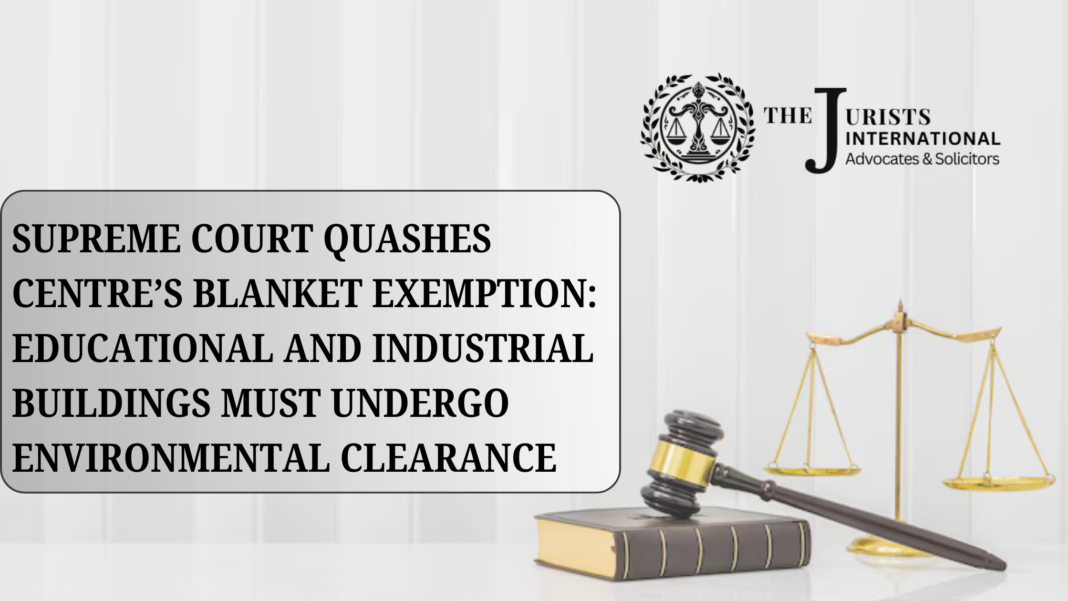In a landmark judgment delivered on August 5, 2025, the Supreme Court of India, in the case of Vanashakti v. Union of India, struck down Note 1 to Clause 8(a) of the Environmental Impact Assessment (EIA) Notification, 2006, which the Centre had introduced through a notification dated January 29, 2025.
This note had controversially exempted large-scale construction projects such as schools, colleges, hostels, and industrial sheds—even those exceeding 20,000 square metres of built-up area—from the requirement of prior environmental clearance, subject to minimal sustainability conditions.
A bench comprising Chief Justice B.R. Gavai and Justice K. Vinod Chandran held that this blanket exemption was arbitrary, unscientific, and violative of the Environment (Protection) Act, 1986. The Court emphasised that construction activities—regardless of their intended public or institutional purpose—can have severe environmental impacts and must not be permitted to bypass the legally mandated EIA process.
It further ruled that environmental obligations cannot be diluted on the grounds of social utility, reaffirming the precautionary principle and public trust doctrine as integral to Indian environmental jurisprudence. While upholding other portions of the January 2025 notification (particularly those delegating assessment authority to State Environment Impact Assessment Authorities), the Court decisively annulled the exemption for educational and industrial buildings.
This verdict is a powerful reminder that development goals must be harmonised with ecological responsibilities, and that no category of construction can be above environmental scrutiny simply due to its function.
Supreme Court Quashes Center’s Blanket Exemption: Educational and Inustrial Buildings must undergo Environmental clearances



